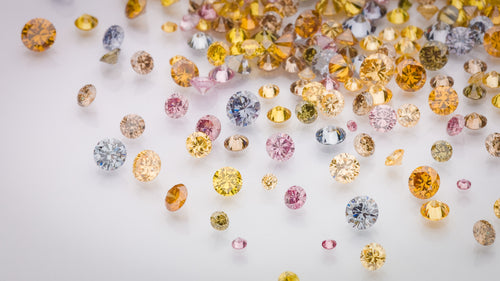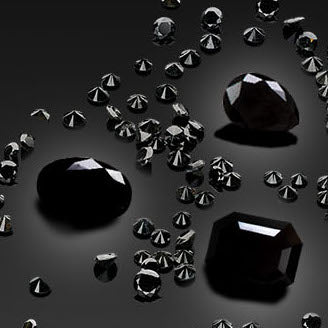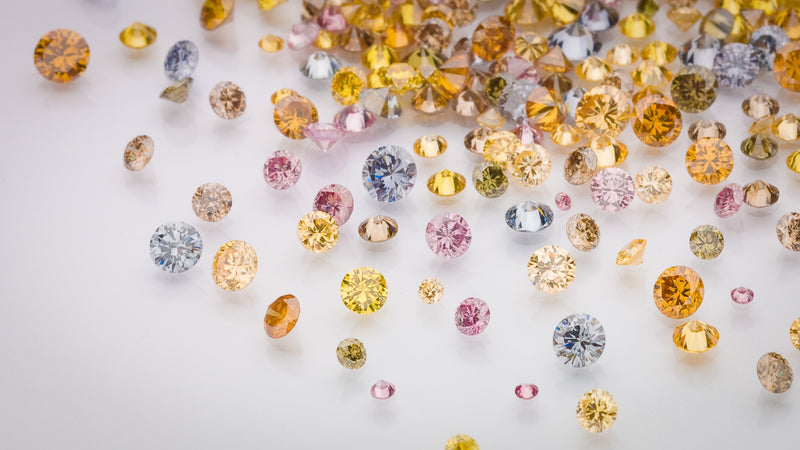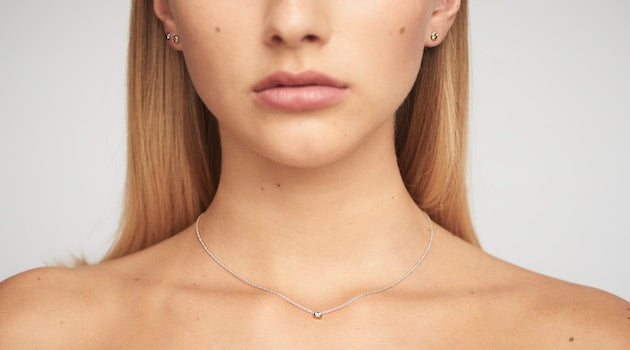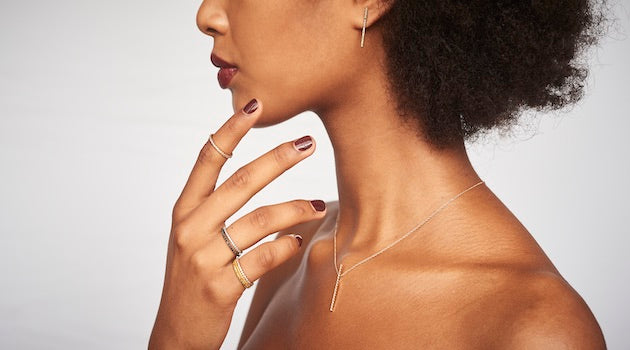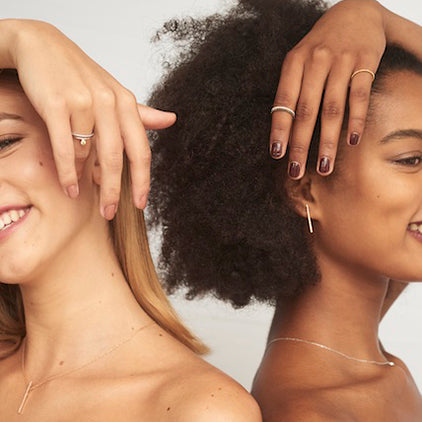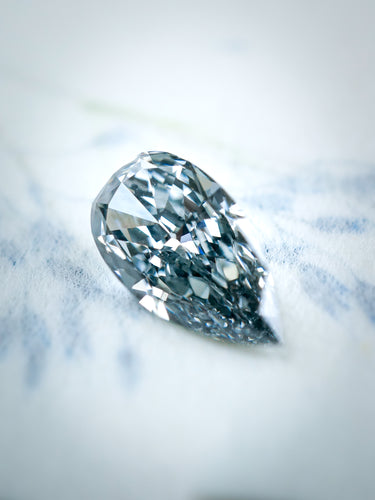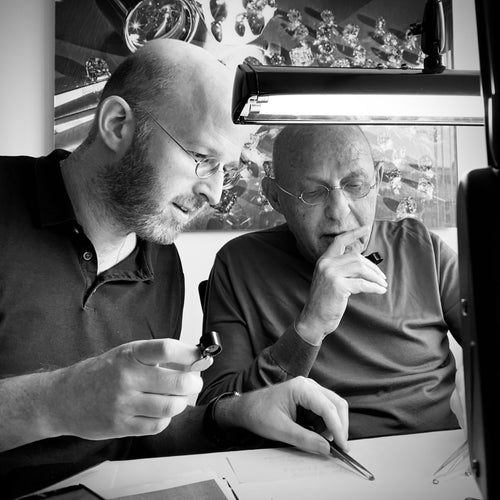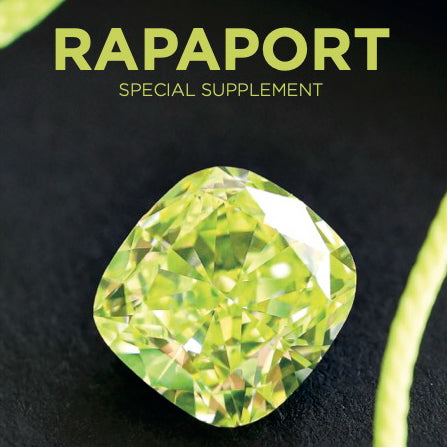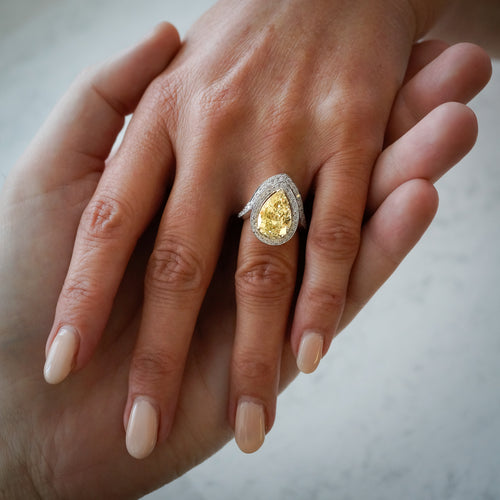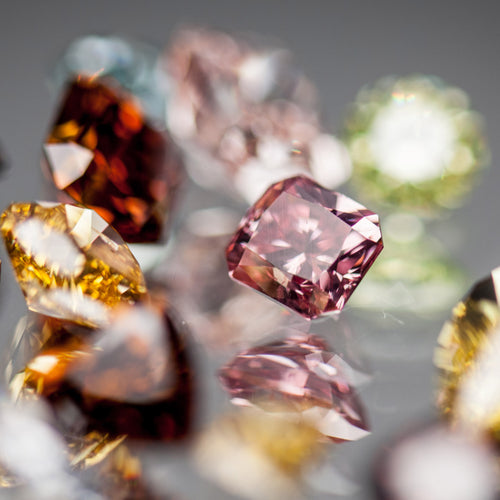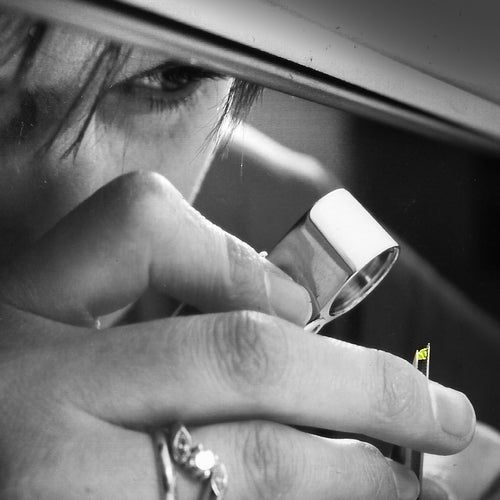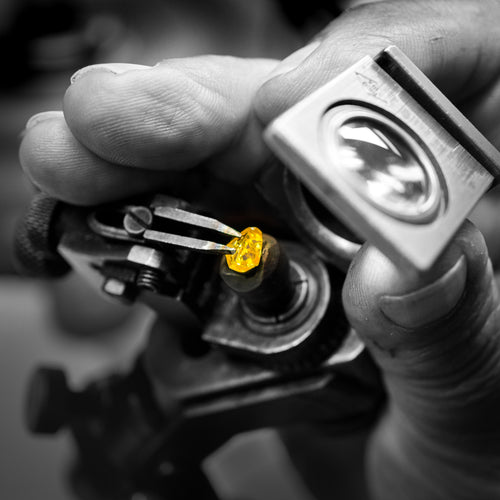At Langerman Diamonds, we believe every diamond tells a story. For rough diamonds, that captivating narrative begins deep within the Earth, long before the polishing wheel ever touches the stone. Raw diamonds are shaped only by geological forces and time.
Whether you're a collector, investor or jewelery-maker, rough diamonds offer a tangible and captivating natural diamond option.
Explore our selection of natural rough diamonds for sale.
What is a Rough Diamond?
A rough diamond, often referred to as a raw diamond or uncut diamond, is a natural crystal in its original, untouched form. Unlike polished diamonds, which are cut to exacting standards for maximum sparkle, rough diamonds retain the unique contours, inherent inclusions, and natural surface textures created by Mother Earth.
These stones typically appear matte or exhibit a subtle luster, showcasing irregular shapes and complex surfaces that often hint at their internal crystalline structure. Common crystal habits you might encounter include:
- Octahedrons: Two pyramids joined base-to-base, representing the most frequent natural diamond shape.
- Cubes: Boxy structures with distinct edges.
- Macles: Triangular twin crystals, frequently observed in fancy color diamonds.
- Dodecahedrons: Twelve-faced shapes with soft, curved surfaces.
Unlike lab-grown rough diamonds, which tend to be uniform and cubic, natural rough diamonds display unpredictable shapes and varied surface textures, a direct result of the Earth's dynamic and chaotic forces.
The Formation of Rough Diamonds
The incredible journey of a diamond commences over a billion years ago, deep within the Earth’s mantle. Under immense pressure – over 45,000 times that of our atmosphere – and extreme temperatures exceeding 2,100°F (1,150°C), carbon atoms slowly but surely transform into magnificent crystalline diamonds.
These newly formed diamonds are then transported to the Earth’s surface by ancient, powerful volcanic eruptions, typically through two primary types of deposits:
- Pipe Mining: Diamonds are found embedded in host rock within vertical volcanic pipes (known as kimberlite or lamproite pipes).
- Alluvial Mining: Secondary deposits where natural erosion has carried diamonds into riverbeds, lakebeds, and coastal areas.
Each rough diamond unearthed carries within it the indelible imprint of this extraordinary geological process.
Transforming Rough Stones into Gems
Cutting a rough diamond is not merely a technical process; it is a profound art form. For natural color diamonds, this process becomes even more delicate and nuanced. As one Langerman polisher eloquently states:
“We have to find the spot of color in a stone and apply facets to reflect the hue throughout the diamond. The polishing strategy can keep changing during the process depending on how the material is reacting to your touch.”
1. Planning: Polishing a natural color diamond is as much an art as it is a skill. At Langerman Diamonds, this process is guided by decades of experience and an intuitive understanding of each stone. Before a single facet is applied, the polisher carefully studies the diamond to identify its center of color, which is the area where its hue is most concentrated. From there, every decision about orientation and facet placement is made to draw that color outward, enhancing its intensity and harmony. No two stones behave the same, and the strategy often evolves mid-process as the polisher responds to how the diamond reveals itself through each touch
2. Cutting: Rough diamonds are broadly categorized into two main types:
- Makeable: Stones that can be directly shaped into a gem.
- Sawable: Some diamonds require splitting or cleaving before the main cutting process can begin. At Langerman Diamonds, we rely on time-honored techniques passed down through generations. Traditional cleaving (using precise hand tools and an expert eye) allows our craftsmen to divide the stone along its natural planes with care and confidence. This approach demands deep experience and patience, ensuring the integrity of the diamond is preserved from the very first strike.
3. Polishing: Once shaped, the diamond undergoes the polishing phase, where a series of precisely angled facets are applied – up to 58 facets for a classic round brilliant cut. This critical step significantly enhances the stone’s optical performance and dazzling visual appeal.
At Langerman Diamonds, cutting is a craft rooted in tradition and guided by human intuition. Rather than relying on software or high-tech machinery, our master cutters draw on decades of hands-on experience and a deep understanding of each stone’s natural structure. Every decision, from how to orient the rough to where each facet should fall, is made with care, patience, and an artistic eye. This artisanal approach ensures that the unique beauty and color of each diamond is revealed in the most compelling way possible.
Types of Cuts from Rough Diamond Shapes
The original, inherent shape of the rough diamond profoundly influences the final cut it can yield:
- Octahedrons: Often yield two brilliant Round Brilliant diamonds.
- Macles or Irregular Shapes: Excellently suited for unique cuts like Emerald, Radiant, Pear, or Cushion cuts.
Every cut involves a careful trade-off between maximizing carat weight, optimizing color, and achieving exceptional brilliance. For instance, the legendary Hope Diamond began as a 110.5-carat rough and now weighs a remarkable 45.52 carats after its transformation. The ultimate goal is always to balance these elements with minimal material loss.
Frequently Asked Questions About Rough Diamonds
Can you buy rough diamonds?
Yes. Langerman Diamonds offers a carefully curated selection of rough diamonds for sale, available in a mesmerizing array of natural colors and unique shapes.
Are rough diamonds cheaper than polished diamonds?
Generally, yes. Rough diamonds often cost less per carat than their polished equivalents, but this can vary significantly based on the stone’s inherent quality, size, and potential yield.
Can rough diamonds be certified?
Yes. While rough diamonds are not graded by the same "4Cs" systems as polished diamonds, they can still be assessed, documented, and authenticated by reputable gemological laboratories like the GIA (Gemological Institute of America).
What shapes do rough diamonds come in?
Common natural shapes include octahedrons, cubes, dodecahedrons, and macles. Each unique shape presents different and exciting cutting possibilities for the artisan.
Do rough diamonds sparkle?
Not in the same way as polished diamonds. Rough diamonds possess a more subtle, natural luster and earth-toned reflection, rather than the intense, brilliant sparkle of a faceted gem.
Discover the Uncharted World of Rough Diamonds
Whether you're looking to own a tangible piece of the Earth’s ancient geological past or envision crafting a truly bespoke piece of jewelry, Langerman’s exceptional collection of rough diamonds offers a unique window into the untouched, inherent beauty of natural colored stones.
Our dedicated experts are always available to guide you through the selection process, helping you uncover a rough diamond as profoundly unique and significant as your own personal story.
